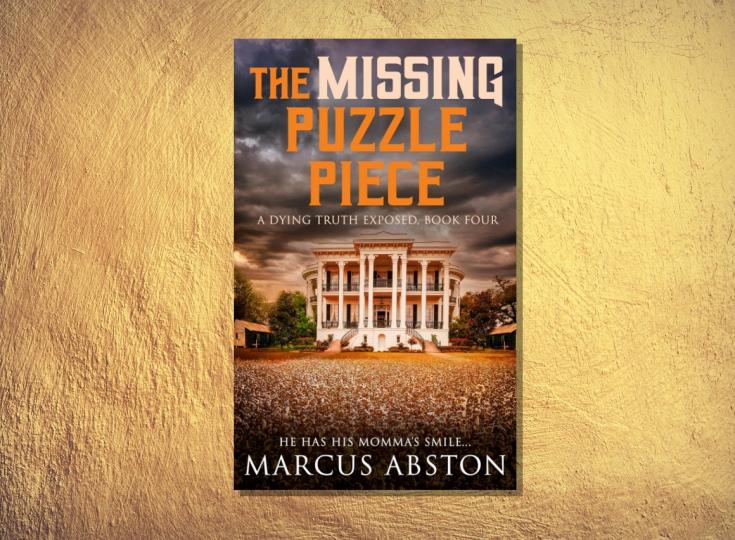Editorial Review: The Missing Puzzle Piece by Marcus Abston

The Missing Puzzle Piece (A Dying Truth Exposed, Book Four), by Marcus Abston, continues Annabelle’s history from the end of The Two Wolves. In the present day, Annabelle’s descendants ask about her story, which is their own family history, and consider connections to their own lives. Like in the previous three novels, there’s a framing story of Albert and his present-day relatives, before he begins to relate more about Annabelle’s history. In the first three novels, Annabelle has built a large family, some by blood relation and some through heartfelt affection. In many ways, Annabelle’s affectionate, interconnected family highlights the similarities with Albert’s family in the present day. This connects well to the series' overall themes of identity and family, and successfully follows elements of the first three novels.
Readers will remember that In the first novel, Annabelle made her escape from slavery, setting off the experiences that shape the rest of the books, and affect her family line all the way through Albert’s modern-day family. She escaped cruel treatment and unchecked abuse as a slave, but Annabelle still felt some affection towards Judy May, the daughter of the family who kept her enslaved. This relationship served Annabelle’s wider story well, by portraying characters who profited from slavery but weren’t individually cruel, the author highlights a widespread system and reminds readers that “nice” people may not be trustworthy or sympathetic. Judy May seemed to care about Annabelle, too, at least as much as she was able to have affection for her family’s property.
An adult Judy Mays reappears in this novel. At this stage in her life, she and her husband are moving away from gaining their wealth from field slaves, not because they recognize the exploitations, but because they have other investments now, to diversify and increase their family’s income and security. The author does such a great job of showing Judy Mays as a child and then as an adult, without the cruelty or violence of other slave-owning characters but still happily profiting from the system of slavery. Here, Judy Mays recognizes Annabelle’s son, both from his physical resemblance to his mother and from his quick, educated mind. Legally, Annabelle and her son remain Judy Mays' property…
In book three, readers saw members of Annabelle’s extended family consider what kind of people they would be, often facing no-win situations of returning violence or accepting defeat. Now, readers wonder which side of Judy May will win out. Does her old affection lead to some understanding for Annabelle? Or does she profit by the laws of slavery? This section of the novel might not be as engaging to readers without the familiarity of the earlier novels, but for readers who've been with Annabelle through all four books, this is a tense, dramatic, and believable turn of events.
Again, the end of the novel returns to the framing story in the modern day, and Albert’s family reacts to their ancestors’ struggles, and what they have learned. The book concludes, knowing that the story of Annabelle and her family is far from completed. Fans of the first three books will enjoy seeing how events unfold in this one, too.





